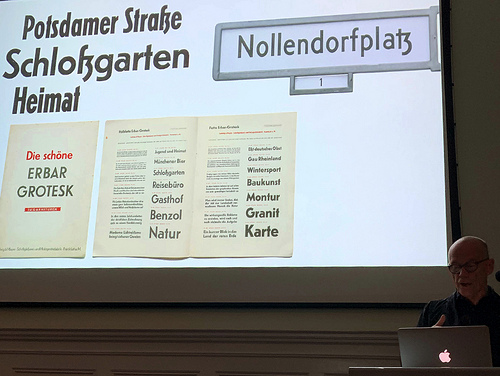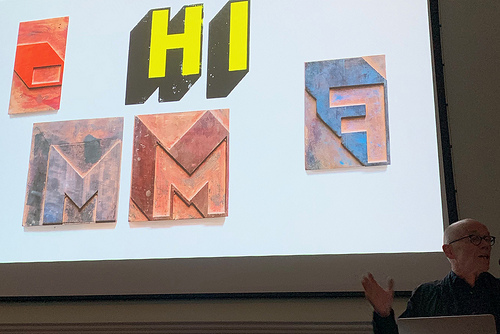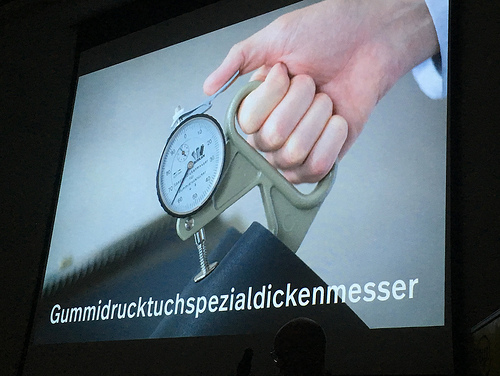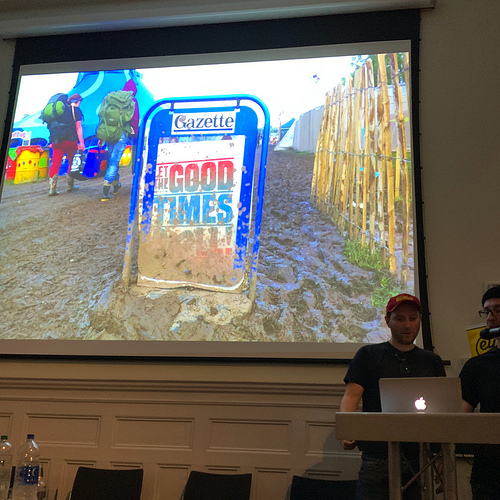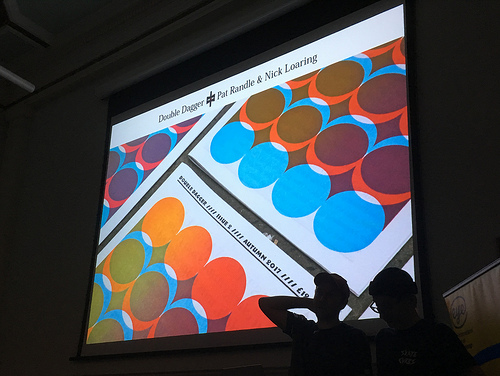Eye Magazine hosts Type Tuesday about 21st-Century letterpress featured Double Dagger, The Counter Press and Erik Spiekermann.
The world famous Erik Spiekermann opened the night with his talk. And touched on the subject of ‘Craft, skill, trade, vocation: The human impulse to make something for its own sake, to do it as well as you can,’ writes John L.Walters.
He followed this with pictures of type, posters, equipment and details from p98a, his spacious and immaculate letterpress studio near Potsdamer Platz in Berlin.
Letterpress involves painstaking love with complex and arcane processes; what used to be a commonplace means of communication is now both craft and art. The craft itself is celebrated for what makes it’s different from today’s digital defaults. The way wood and metal type are set have limitations that can also be seen as freedoms. This talk echoed Christian fro Turner and Duckworth that the fewer assets you have the more creative you have to be. This is the same as letterpress because you’re restricted on what type sets you to have in your collection and also restricted by the point size. For example, Spiekermann says ‘Kerning is overrated,’ declared Spiekermann, showing examples of the wood type that could only be set closer with a hacksaw.
When a client asked Spiekermann to make the type bigger on a p98a letterpress job, he had to explain that this was not possible. You can only work with what you have in the composing room, which in the example he gave was the 16-cicero wood type Fanfare. Letterpress’s welcome constraints were a theme that recurred throughout the evening, which included short presentations by The Counter Press (David Marshall and Elizabeth Ellis) and the Double Dagger team of Pat Randle and Nick Loaring. When you don’t have a ‘y’ or a sufficient quantity of the letter ‘a’ or ‘N’, you have to improvise.
Spiekermann is an entertaining speaker, with an amiable bluntness and sense of the absurd that appeals to British audiences. The biggest laughs of the evening were for some long German technical terms.
The Counter Press’s Marshall and Ellis expressed their passion for print in measured British tones. Their clients include L’Atypique cider and the St Bride Foundation itself. If you become a ‘Friend of St Bride’ (which we strongly recommend), you can carry The Counter Press’s letterpress membership card design in your pocket or bag. They showed pictures of their studio, with its modest proofing presses, in which they make their own newsprint journal. Extra Condensed no. 3 is promised soon.
Above is the process The Counter Press go through making Extra Condensed.
Also talking are the guys behind Double Dagger – Nick Loaring and Pat Randle. They collaborated for a project at a festival in Glastonbury called Glastonbury free press. They used polymer plates which they found highly
They showed an early collaboration (Glastonbury Free Press) for the Glastonbury Festival using polymer plates that they found highly was not good enough. Loaring and Randle then had great success with metal type and Double Dagger is printed at Whittington Press (home of Matrix) in Gloucestershire using the Press’s own Monotype typesetting machines. The journal demonstrates the constraints of using letterpress but also shows you the craft and skill involved in creating the magazine.


